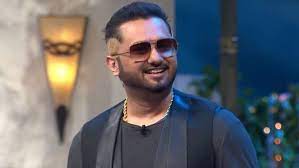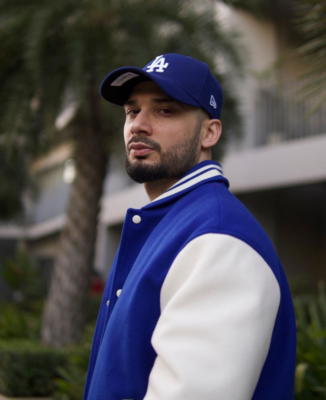Top Indian Rapper: Who Reigns Supreme in India’s Rap Scene?

Table of Contents
Exploring the dynamic landscape of Indian hip-hop, you’ll find a vibrant tapestry of artists each with their own unique flow, style, and musical sensibility. The Indian rap scene has exploded in recent years, with talents that have taken the art form to new heights, captivating audiences both at home and internationally.
With the influence of reality shows and blockbuster films, rap in India is more than just music; it’s a cultural movement. From lyrical storytelling to hard-hitting beats, India’s rappers are not just performers but poets and producers, crafting narratives that resonate with the country’s youth.
In the quest to crown the best rapper in India, remember it’s not about the rankings. Each artist brings something special to the mic, reflecting their individuality and the diversity of the genre. So, let’s dive into the rhythm and rhyme of India’s hip-hop revolution and discover who stands out in this lyrical labyrinth.
Yo Yo Honey Singh

When you dive into the Indian hip-hop scene, you can’t overlook the influential force of Yo Yo Honey Singh. With a background that fuses mainstream beats with authentic hip-hop rhythms, Honey Singh stands out as a pioneering figure. Born on March 15, 1983, in Hoshiarpur, Punjab, Hirdesh Singh, famously known as Yo Yo Honey Singh, has carved a niche in the music industry that resonates with a wide audience. His ascent to the top echelons of Indian rap isn’t just about catchy hooks; it’s about how he crafts narratives in his lyrics that bind with the pulse of society.
His contributions go beyond mere performance; Honey Singh is also a skillful music producer, indipop singer, and actor. His albums like International Villager and Desi Kalakaar showcase his versatility and keen music sense, which have claimed top spots on several charts. With tracks like “Brown Rang” and “High Heels” clinching prestigious ranks globally, Honey Singh has demonstrated his music’s international appeal.
What sets Honey Singh apart is his market value. An astonishing feat in his career was when he became the highest-paid artist in Bollywood, raking in Rs 7 million for a single track in the film ‘Mastaan’. It’s no wonder that his estimated net worth stands at a whopping Rs 180 crores. The numbers bear testament to his success and popularity.
His songs often tackle societal issues, a departure from the traditional themes of love and family predominant in Mumbai’s music scene. Such poignant storytelling through rap has positioned Yo Yo Honey Singh as not just an artist but a cultural icon who has mastered the art of conveying powerful messages wrapped in the rhythm of his words.
With every release, Honey Singh continues to push the boundaries, experimenting with new sounds and styles, proving that in the Indian rap landscape, his legacy is not only about the beats but also the depth and breadth of his artistry.
Raftaar

When you dive into the Indian hip-hop scene, Raftaar undoubtedly grabs your attention. Much like a venerable actor stands out for their versatility and depth, Raftaar makes his mark with a distinctive style that sets him apart from contemporaries. Known to his fans as Dilin Nair, this Kerala-born artist initiated his journey with the Punjabi band RDB and successfully branched into a solo career that’s as multifaceted as it’s influential.
Raftaar’s discography is as eclectic as it gets — spanning energetic commercial dance numbers, introspective tracks addressing social issues, and bold, adult-themed raps. His ability to oscillate between genres and themes with ease has earned him considerable acclaim and a raft of awards, including a nod for the Best Urban Song of the Year at the Brit Asia Awards for “Swag Mera Desi” in 2016.
Here’s a quick look at Raftaar’s recognition over the years:
| Award | Song | Year |
|---|---|---|
| Best Urban Song of the Year | Swag Mera Desi | 2016 |
His contributions to Bollywood are significant, pairing with top music producers to deliver several popular tracks, thereby cementing his position as a sought-after artist in the industry.
Beyond his rapping prowess, Raftaar’s talents extend to the dance floor, where his moves captivate audiences just as confidently as his lyrics. On Indian television, he’s revered not just as a rapper but as a mentor, leading teams on the reality show Roadies and sharing his expertise as a judge on MTV Hustle — India’s premier rap and hip-hop show.
The anticipation for Raftaar’s upcoming album, “Mr. Nair”, was palpable among fans, who expect nothing less than the innovation and engagement that’s become synonymous with his name. His forthcoming release promised to add another dimension to his already remarkable career, with early 2022 marked as the expected drop.
Navigating through Raftaar’s impact on the Indian rap scene, it’s evident that he’s much more than an entertainer; he’s a catalyst for change and a beacon for hip-hop culture. His legacy is sprinkled with versatility that resonates well with his audience, ensuring that each performance, track, and album is not just heard but felt.
Badshah

Delving deeper into the Indian rap scene, you’ll encounter Badshah, a name that echoes across locales, transcending the conventional boundaries of hip-hop. Born Aditya Prateek Singh Sisodia in New Delhi, Badshah’s roots are an eclectic mix of Haryanvi and Punjabi heritage, which beautifully colours his musical expression. Revel in the finesse of Badshah’s craft, a journey that began with Mafia Mundeer and flourished into a solo voyage in 2012, manifesting initially with the earworm “Kar Gayi Chull”.
Badshah’s sonic weltanschauung integrates a spectrum ranging from Hindi to Haryanvi and Punjabi, and it’s this versatility that’s made him stand out. The magic of his music has consistently found its way into Bollywood cinema, from the heartthrob of “Humpty Sharma Ki Dulhania” to the chartbuster score of “Khoobsurat.” His sounds aren’t just auditory treats—they’re cultural staples that shape contemporary Indian soundscapes.
His alliances go beyond homegrown talents, earning stripes with international collaborations that have solidified his stance as a Global Trendsetter. The year that saw “Voodoo” release, featuring J Balvin and Lil Baby, marked a seminal point in Indian rap, paving the way for a truly global Indian sound. It’s this extraordinary ability to keep his artistry both rooted and universal that makes Badshah’s impact enduring.
Yet, in a world constantly in flux, Badshah’s appeal remains undiminished, a testament to his Longevity and Relevance in the scene. And despite his global stardom, it’s his work that speaks volumes, syncopated with the pulse of his listeners. Whether dissecting societal facades through potent lyrics or weaving party anthems, Badshah’s oeuvre is a narrative of remarkable Artistic Growth.
The anticipation surrounding new releases from Badshah continues to surge — a reflection of his audience’s unwavering faith in his musical sojourns. His trajectory is not merely about creating anthems but also sculpting the soundscape of Indian hip-hop and influencing a generation to find their voice within rhythm and rhyme.
Divine

When exploring the echelons of Indian hip-hop, you’re sure to encounter Divine, the Mumbai-born rapper whose real name is Vivian Fernandes. Divine burst onto the scene in 2011, carving his niche as an underground artist with reflective English lyrics before pivoting to Hindi to capture the essence of his Mumbai roots. His affiliation with the crew, Mumbai’s Finest, paved the way for his emergence as a cutting-edge artist in the Indian rap landscape.
Divine’s Rise to Prominence
It wasn’t long before Divine’s lyrical prowess caught the public eye. In 2014, his groundbreaking track “Yeh Mera Bombay” not only swept up the Rolling Stone India’s Best Music Video award but it also spotlighted him as a force to be reckoned with within the underground community. His debut single “Jungli Sher,” which radiates with street authenticity, climbed the music charts and even found its way onto the BBC Asian Network’s Breakfast Show on April 29, 2016.
| Achievement | Year | Recognition |
|---|---|---|
| Yeh Mera Bombay | 2014 | Rolling Stone India’s Best Music Video of the Year |
| Jungli Sher release | 2016 | Top of the charts & featured on BBC Asian Network |
Beyond Music: A Cultural Icon
Divine’s influence extends well beyond the music; his journey inspired the critically acclaimed Bollywood movie ‘Gully Boy.’ His ability to weave narratives from the fabric of his life experiences has resonated with fans across the country. With a foundation built on relatable storytelling and raw talent, Divine’s signature style showcases the hypnotic allure of urban Mumbai and stands as a testament to the power of self-expression.
Experience the Tracks That Defined a Genre:
- “Yeh Mera Bombay” (2013)
- “Mere Gully Mein” (2019), in collaboration with Naezy
Seedhe Maut
You might not have heard of Seedhe Maut yet, but in the realm of Indian hip-hop, they’re quickly becoming a force to reckon with. This Delhi-based duo, consisting of Encore ABJ and Calm, crafts narratives that resonate deeply with the Indian youth. Their journey in the Indian rap scene began with their debut track “Seedhe Maut Anthem” and has only escalated in scope and intensity since.
Their decision to switch from rapping in English to Hindi was a strategic move that significantly expanded their audience. This isn’t just about the language; it’s about reaching the hearts of millions who speak and feel in Hindi. As you dive into their discography, you’ll find a striking balance between aggression and lyricism, between street-smart wordplay and insightful commentary on socio-political themes.
The duo’s collaboration with production maestro Sez on the Beat further cements their impact. The beats are fresh, and their collaborations are a testament to a symbiotic relationship that spells out chart-topping tracks.
Here’s a snapshot of their discography:
| Album | Release Year |
|---|---|
| Bayaan | N/A |
| Nayaab | N/A |
| न (Mixtape) | N/A |
Their music touches on everything from politics to romance, from critiques of the Indian society to musings on the education system. It serves not just as entertainment but as a mirror to the thoughts and struggles of India’s youth.
With their sharp, contentious lyrics, Seedhe Maut stands shoulder to shoulder with international hip-hop duos such as Run The Jewels and Mobb Deep, embodying the same spirit of rebellion and social commentary. Encore ABJ and Calm first met at a rap battle in Deer Park, Hauz Khas Village, a meeting that would birth a partnership resonating with the hopes and dreams of India’s young generation.
As Seedhe Maut continues to navigate through the evolving soundscape of New Delhi’s hip-hop scene, they’re defining the path for future artists and setting formidable standards for lyrical depth and dynamic production. Keep an ear out, because each track they drop pushes the envelope and carves a deeper niche for Indian rap on the global stage.
KRSNA – Young Prozpekt

In the dynamic realm of Indian hip-hop, one name that stands out for his exceptional lyrical prowess and compelling storytelling is KRSna, also known as Young Prozpekt. Born Krishna Kaul, he has carved a niche for himself in the music industry, captivating audiences with his unique blend of Hindi and English lyrics, and his ability to address complex social issues through his music.
What sets KRSna apart is his fearless approach to music. He doesn’t shy away from addressing controversial topics, making his songs not just a source of entertainment but also a medium for social commentary. Tracks like “Vyanjan” and “Kaisa Mera Desh” are testaments to his bold and unapologetic style, where he delves into the intricacies of societal issues, politics, and personal struggles. One of KRSna’s most notable achievements is his contribution to the soundtrack of the Bollywood film “Gully Boy,” which brought the underground hip-hop culture into the mainstream spotlight.
His ability to connect with the youth, coupled with his dedication to his craft, has earned him a loyal fan base and respect among his peers in the industry.
King Rocco
If you’re exploring the Indian rap landscape, you’ll quickly discover that King Rocco has carved out a significant niche for himself. Starting as a contestant on MTV Hustle and eventually rising to be one of the top five finalists in 2019, his career trajectory is nothing short of inspiring. Born in Uttar Pradesh and later moving to Delhi, King’s journey from a YouTube channel launch in 2012 to a prominent figure in the rap scene is a testament to his dedication and talent.
In the early stages, King Rocco set the stage for his musical journey on October 5, 2018, with the release of his debut album ‘Circumstances.’ This album featured tracks that reflect King’s unique style, from the raw lyrics to the complex beats that charge his music with authenticity. ‘She Know,’ ‘Red Dirt State,’ ‘The Division,’ and ‘Clearly By Now’ are just a few tracks that highlighted his potential as a rapper, songwriter, and artist on the rise.
Years down the line, King didn’t just rest on his laurels. His 2020 album ‘The Carnival’ threw a spotlight on his evolving musical prowess. Songs like ‘Dracula,’ ’90s Mafiia,’ ‘Let The Eyes Talk,’ and the widely recognized ‘Tu Aake Dekhle’ showcased his versatility and solidified his prominence in the music sphere.
King Rocco’s influence further extended when he made his Bollywood debut, contributing his voice to the song ‘Sahi Galat’ from the movie Drishyam 2 in 2022. This move not only proved his adaptability but also displayed his skills to a broader audience within the Indian cinema space.
Exploring the world of Indian rap without acknowledging King Rocco’s contributions would indeed leave your experience incomplete. His journey mirrors the very essence of what it means to be resilient and innovative in an industry that is constantly shifting. From his initial uploads to his Bollywood break, every step has been calculated, each verse filled with the unmistakable flair that is now synonymous with King Rocco. As his discography grows, so does his influence in the Indian hip-hop community.
MC Stan

MC Stan, born Altaf Shaikh, has emerged as a distinctive voice in the Indian hip-hop scene, known for his raw lyrics and unique musical style. Born on August 30, 1999, in Pune, Maharashtra, this young artist has quickly risen to fame, captivating audiences with his authenticity and innovative sound.
At just 24 years old, MC Stan’s personal life, particularly his romantic relationships, has been a subject of curiosity among fans. While he prefers to keep his private life away from the limelight, it’s his music that speaks volumes about his emotions and experiences.
Coming from a humble family background, MC Stan’s journey into music was fueled by his passion and the support of his loved ones. His family’s belief in his talent played a pivotal role in his rise from the streets of Pune to the national stage. This journey is often reflected in his lyrics, which narrate stories of struggle, resilience, and triumph.
MC Stan’s net worth, estimated to be in the millions, is a testament to his success and popularity. However, it’s his artistic integrity and dedication to his craft that truly define his wealth. His discography, including hits like “Astaghfirullah,” “Khuja Mat,” and “Wata,” showcases his versatility and ability to connect with the youth. His songs are not just tracks but anthems that resonate with the experiences of many.
The fame MC Stan enjoys today is the result of his relentless pursuit of his passion for music. His journey, marked by challenges and milestones, reflects the spirit of a true artist. From engaging in rap battles to performing on grand stages, MC Stan’s evolution as an artist is a narrative of growth, self-expression, and perseverance.
Emiway Bantai

Emiway Bantai, born Bilal Shaikh on November 13, 1995, in Mumbai, India, stands as a self-made icon in the Indian hip-hop community. Known for his independent spirit and electrifying performances, Emiway’s journey from a local rapper to an international sensation is a testament to his relentless drive and raw talent.
At 29 years old, Emiway’s life is a narrative of passion and perseverance. His music, characterized by its catchy beats and compelling lyrics, resonates with the youth, making him a household name. While Emiway tends to keep his personal life private, his artistry openly reflects his experiences, thoughts, and aspirations, connecting deeply with his audience.
Emiway’s journey in the music industry is a story of grit and self-belief. Starting with nothing but a dream and a YouTube channel, he catapulted himself to fame with hits like “Machayenge” and “Firse Machayenge,” anthems that celebrate his journey and the spirit of the youth. His ability to produce, write, and perform his own music has not only set him apart but also established him as a true pioneer in the Indian hip-hop scene.
Emiway’s impact extends beyond his music; it’s about inspiring a generation to believe in the power of dreams and the strength of individuality. His journey, marked by self-made success and relentless innovation, continues to inspire aspiring artists and music enthusiasts alike.
Background on Indian rap scene
Origins of Indian Rap
The birth of Indian rap can be traced back several decades when the global hip-hop scene began to permeate South Asian culture. Initially perceived as an underground movement, rap in India wasn’t merely an imitation of Western trends; rather, it was a form of expression that blended traditional Indian music with contemporary beats and rhythms. Indian subcontinent influences and languages, mainly Punjabi and Hindi, were instrumental in shaping what is now known as ‘Desi hip-hop’.
This mesh of styles galvanized local artists who saw hip-hop as a powerful medium to tell their stories, often reflecting the social and political landscapes of their communities. From its discreet beginnings in the urban pockets of India’s vast cities, the genre quickly found a voice among the youth, who resonated with its earnest narratives and potent cultural commentary.
Growth and Evolution of Indian Rap
Since its inception, Indian rap has undergone a significant transformation. The early 2010s marked a pivotal moment with a surge of interest in the genre. Suddenly, rap was not just music; it became a symbol of resistance and identity for many young Indians. The milestone movie ‘Gully Boy’ played an undeniable role in propelling rap into the limelight, showcasing the raw talent and aspiration of India’s street rappers.
But what truly highlights the growth of Indian rap is its incredible diversification. Desi hip-hop now encompasses an array of styles from mumble rap to rap metal and lyrical rap. Independent artists and labels have mushroomed across the country, each bringing their unique flair and local dialects to the fore, which has been instrumental in rap’s ascent to mainstream popularity.
The incline in digital platforms has also opened doors for numerous indie rappers, allowing them to self-produce and distribute their music, reaching audiences far and wide. The result has been explosive, with Indian rap not just attaining national acclaim but also starting to pulse on the global stage. As the genre continues to evolve, it maintains its core essence—a platform for artists to express, challenge, and redefine the status quo through the power of their words and beats.
Rise of underground rap in India
Impact on the Indian Rap Industry
The ascent of underground rap in India has been nothing short of phenomenal. It has redrawn the margins of the Indian music industry, traditionally dominated by Bollywood soundtracks. Independent artists have pivoted from the periphery to the centre stage, harnessing social media platforms to reach a diverse audience.
Desi hip-hop embodies a cultural shift, echoing the voice of a generation grappling with social issues. Through their lyrics, these rappers deliver powerful messages on topics ranging from poverty to politics, contributing to the genre’s surging credibility and authenticity.
One can’t overlook the impact of digital platforms that have democratized music distribution, enabling rappers to bypass traditional gatekeepers. This has vitalized the scene, making it possible for Indian rap to enjoy daily streams in the millions. It’s a sign of an invigorated industry where talents surface based on merit and resonance with listeners rather than mere industry connections.
Challenges Faced by Underground Rappers
Despite their increasing popularity, underground rappers face several challenges. A major hurdle is financial viability. Without the backing of major labels, many artists struggle to afford quality production and marketing to compete at higher levels and reach wider audiences.
Moreover, societal acceptance of rap as a legitimate art form is an ongoing battle. Often labelled as a medium of rebellion or dissent, rappers counter stereotyping while attempting to elevate the perception of hip-hop culture.
Cultural barriers, too, affect the reach of rappers from diverse regions. Given the rich tapestry of languages in India, rappers often find it challenging to cross over linguistically, restraining their music to particular demographics. Balancing the incorporation of regional dialects and achieving mainstream appeal remains a complex equation for these artists.
The journey for underground rappers is fraught with thickets of intense competition. Breaking through the noise in a saturated online space demands a unique sound and relentless self-promotion, tasks not every talented rapper is equipped for or inclined to undertake.
Notwithstanding these difficulties, the underground rap movement holds the potential for considerable scalability in the Indian music landscape. Its persistent rise is a testament to the raw talent and unyielding passion of artists committed to their craft.
Mainstream success of Indian rap
Bollywood Collaborations
You can’t talk about the success of Indian rap without mentioning the Bollywood machine, which has become a significant force in propelling rappers into the limelight. Tracks like “Apna Time Aayega” and “Sher Aaya Sher” from the movie Gully Boy exemplify how rap music has found a comfortable seat at the high table of Indian cinema’s soundtracks. Indian rappers are now regular contributors to blockbuster movie albums, previously dominated by more traditional Bollywood music. These collaborations often become trending topics, drawing millions of views on YouTube, thus cementing rappers as household names.
International Recognition
But it’s not just within the panorama of Indian cinema that rappers are making waves. The international stage has also taken notice, with artists like Badshah collaborating with international stars such as J Balvin and Lil Baby, breaking cultural and linguistic barriers. The infectious energy of Indian rap music extends beyond the nation’s borders, resonating with global audiences. Songs like Naatu Naatu from RRR have further put Indian music, including rap, on the global map, showcasing the genre’s versatility and appeal. With such recognition, Indian rappers are redefining what it means to be successful in a market that once seemed impenetrable.
Conclusion
Determining the best rapper in India isn’t just about lyrical prowess or chart-topping hits; it’s about the influence and wave they create in the music industry. Your understanding of the Indian rap scene has deepened, acknowledging the grit of underground artists and the glitz of mainstream acts. As Indian rappers continue to shatter barriers and captivate audiences worldwide, they’re not just making music—they’re shaping a cultural phenomenon. Remember, the best rapper for you resonates with your taste and the stories you seek in the rhythm and rhymes of Indian rap. Keep your ears open, as the scene is vibrant and the next big hit could be just around the corner.
Frequently Asked Questions
Who is leading the underground rap movement in India?
Indian rapper Divine is considered one of the pioneers leading the underground rap movement in India, inspiring a new generation of artists.
How has Bollywood influenced Indian rap?
Bollywood has significantly influenced Indian rap by incorporating rap songs into movie soundtracks, amplifying the genre’s reach and popularity across the country.
Can underground Indian rappers achieve mainstream success?
Yes, several underground Indian rappers have achieved mainstream success by collaborating with Bollywood and gaining viral fame through social media platforms.
What challenges do underground rappers in India face?
Underground rappers in India face challenges like financial sustainability, societal acceptance, and overcoming cultural and linguistic barriers within the music industry.
Are Indian rappers recognized internationally?
Indian rappers are starting to gain international recognition, breaking through cultural barriers, and engaging global audiences with their unique styles and lyrical content.





